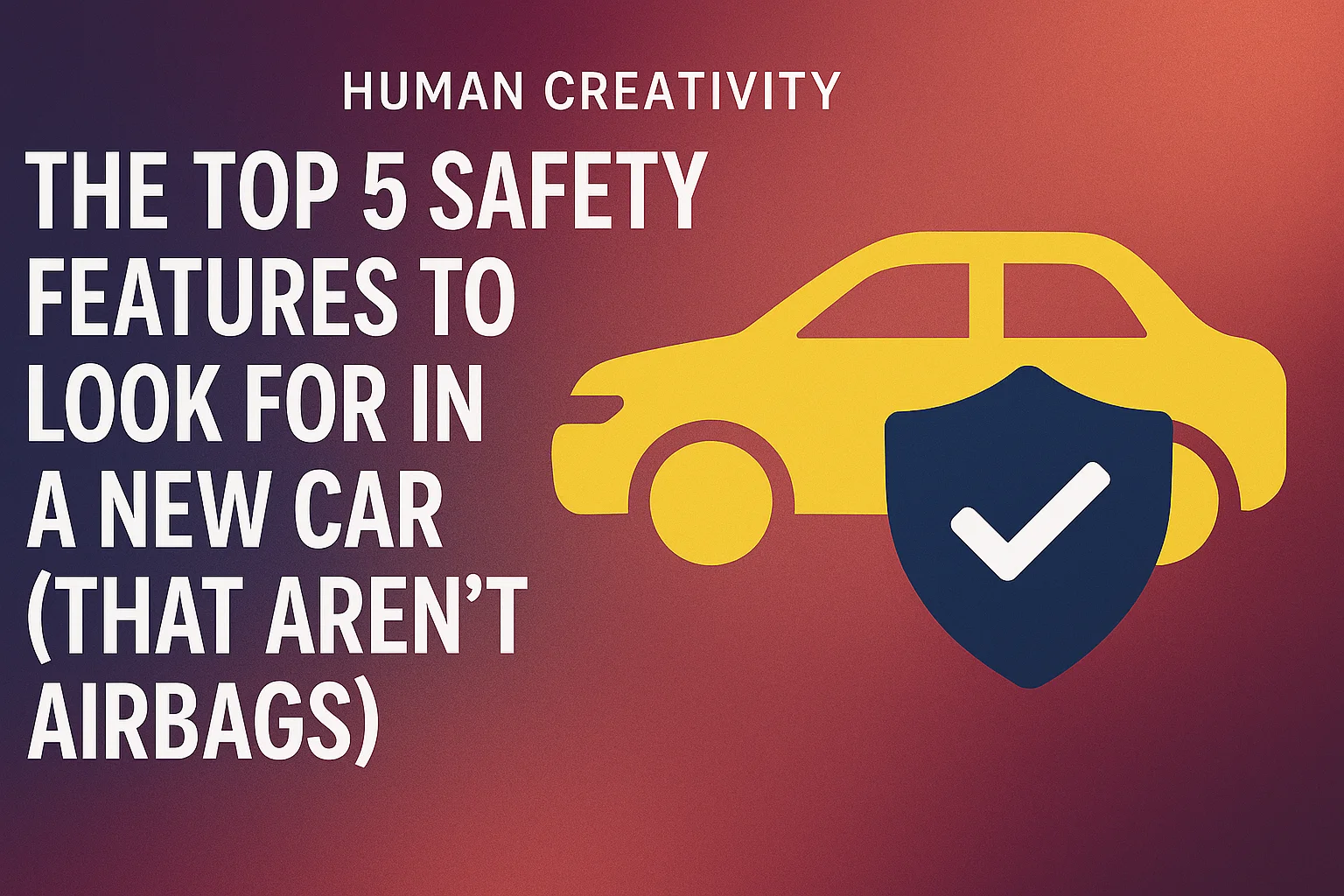When we shop for a new car, safety is a top priority, especially for our families. For decades, the conversation about safety has been dominated by two things: build quality (the “toughness” of the car) and the number of airbags. While both are still critically important, modern car safety has evolved far beyond them.
Today, the biggest breakthroughs are in accident prevention. The safest car is not just the one that protects you in a crash, but the one that helps you avoid the crash entirely.
If you’re buying a new car in 2025, airbags and a 5-star crash rating are the minimum. Here are the top 5 advanced safety features you should look for—the ones that actively work to keep you safe on the road.
1. Electronic Stability Program (ESP) / Electronic Stability Control (ESC)
What it is: This is arguably the most important safety invention since the seatbelt. ESP is a computerized system that helps prevent your car from skidding or spinning out of control. If the system detects a loss of steering control—for example, when you swerve suddenly to avoid an obstacle or take a corner too fast on a wet road—it intelligently applies individual brakes and can even reduce engine power to help bring the car back to your intended path.
Why it matters: It’s a non-negotiable, life-saving feature. In India, where roads can be unpredictable with stray animals or sudden obstacles, ESP is the silent co-pilot that can save you from a major high-speed accident. Thankfully, it is now becoming standard on more and more models.
2. ADAS (Advanced Driver-Assistance Systems)
What it is: ADAS is not a single feature, but a suite of features that work together. The most important one to look for is Automatic Emergency Braking (AEB). Using cameras or radar, the car monitors the road ahead. If it detects a stopped car or a pedestrian and you don’t react in time, it will first warn you, and then automatically apply the brakes to prevent (or at least lessen the severity of) a collision.
Other key ADAS features include:
- Lane Keep Assist: Gently steers the car back into its lane if you start to drift.
- Adaptive Cruise Control: Automatically adjusts your speed to maintain a safe distance from the car in front of you on the highway.
Why it matters: AEB is a “guardian angel” in city traffic. It prevents the common, low-speed “rear-ender” collisions caused by a moment of inattention. On the highway, Lane Keep Assist and Adaptive Cruise Control dramatically reduce driver fatigue, making long journeys safer.
3. 360-Degree Camera (or “Surround View Monitor”)
What it is: This feature uses multiple cameras around the car (in the front grille, under the side mirrors, and at the rear) to stitch together a single, “bird’s-eye” view of your car and its immediate surroundings. This image is displayed on your infotainment screen when you’re parking or moving at low speeds.
Why it matters: This is a revolutionary feature for tight Indian cities. It eliminates blind spots, making it incredibly easy to park in tight spaces without scratching your car. More importantly, it helps you see small children, pets, or low-lying objects that are completely invisible from the driver’s seat, preventing a potential tragedy in your own driveway.
4. Tyre Pressure Monitoring System (TPMS)
What it is: TPMS is a simple system that constantly monitors the air pressure inside each of your four tires. If one or more tires are significantly under-inflated, it will give you a warning light on your dashboard.
Why itG matters: A sudden tyre blowout at high speed is one of the most terrifying and dangerous things that can happen on a highway. The primary cause? Driving on an under-inflated tyre that overheats and fails. TPMS gives you an early warning, allowing you to pull over and address the issue before it becomes a catastrophe. It also saves you money by improving fuel economy and extending the life of your tires.
5. ISOFIX / LATCH Mounts for Child Seats
What it is: These are standardized, built-in metal anchor points in the car’s rear seats. They are designed to allow you to quickly, easily, and securely attach a child’s car seat.
Why it matters: Simply using a seatbelt to secure a child seat is often done incorrectly, leaving the seat loose and unsafe. ISOFIX mounts create a rigid, solid connection between the child seat and the car’s chassis. In an accident, this ensures the child seat stays in place and provides the maximum possible protection. If you have or are planning to have young children, this is a non-negotiable feature.
